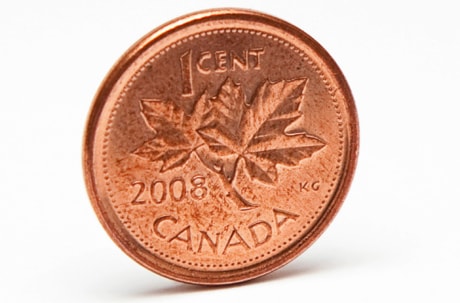TORONTO — If you find a penny and pick it up, nowadays it’s not really good luck at all — in fact, it will probably just sit gathering dust in a jar while taxpayers shell out millions of dollars to produce new ones.
That’s one of the arguments put forward by politicians who will meet Wednesday night to hash out the costs and benefits of abolishing the copper coin altogether as inflation reduces its value and consumers increasingly use debit or credit cards or do their shopping online.
“It’s not the most pressing financial issue facing the nation, but it’s a cost-saving measure that’s a major irritant to both business and consumers,” said Pat Martin, an NDP MP from Winnipeg who tabled a bill in 2008 proposing the elimination of the penny.
“Like in a game of pool, you pick your easy ones first and this is a slam dunk in terms of saving money and reducing productivity loss in the private sector.”
The Senate finance committee will hear from the Bank of Canada, the Royal Canadian Mint and the Department of Finance on the costs involved in producing the penny and the potential impact of eliminating the coin.
The meeting follows a move by the federal government to begin printing Canada’s bills, now made from a cotton-based paper, on a type of plastic. The new notes will be cheaper to produce and will last longer.
Irving Gerstein, a Conservative senator from Ontario and deputy chair of the finance committee, said it only makes sense to abolish the penny if the government wants to spend less money producing its money.
“The production and use of the penny represents hundreds of millions of dollars every year in direct costs to the taxpayers, and that’s why we are reviewing it,” Gerstein said.
“It’s a piece of currency that, frankly, lacks currency.”
The Mint wouldn’t disclose the exact cost of producing a penny, but Martin said estimates range from anywhere between 1.5 cents to as much as four cents when you factor in shipping, distribution and labour costs.
Combined with the lost productivity that comes from consumers and business owners handling such small change, Martin estimated that pennies cost the Canadian economy $100 million to $150 million each year.
According to the Mint, there are about 28 billion pennies in circulation and 455 million were produced last year. One of the concerns raised by anti-penny advocates is that the Mint is producing coins to replace those that are voluntarily taken out of circulation by people who dump them in a jar and can’t be bothered to spend them.
“They have no commercial value. I think the biggest proof that pennies have outlived their usefulness is the little dish of free ones next to cash registers,” Martin said.
Martin’s bill is still on the table. He said consumers would be given five years to cash in their pennies at the bank for larger denominations of currency once the Mint stops producing the coins, and then they would be taken out of circulation entirely. Cash payments would either be rounded up or down to the nearest nickel, depending on the total.
